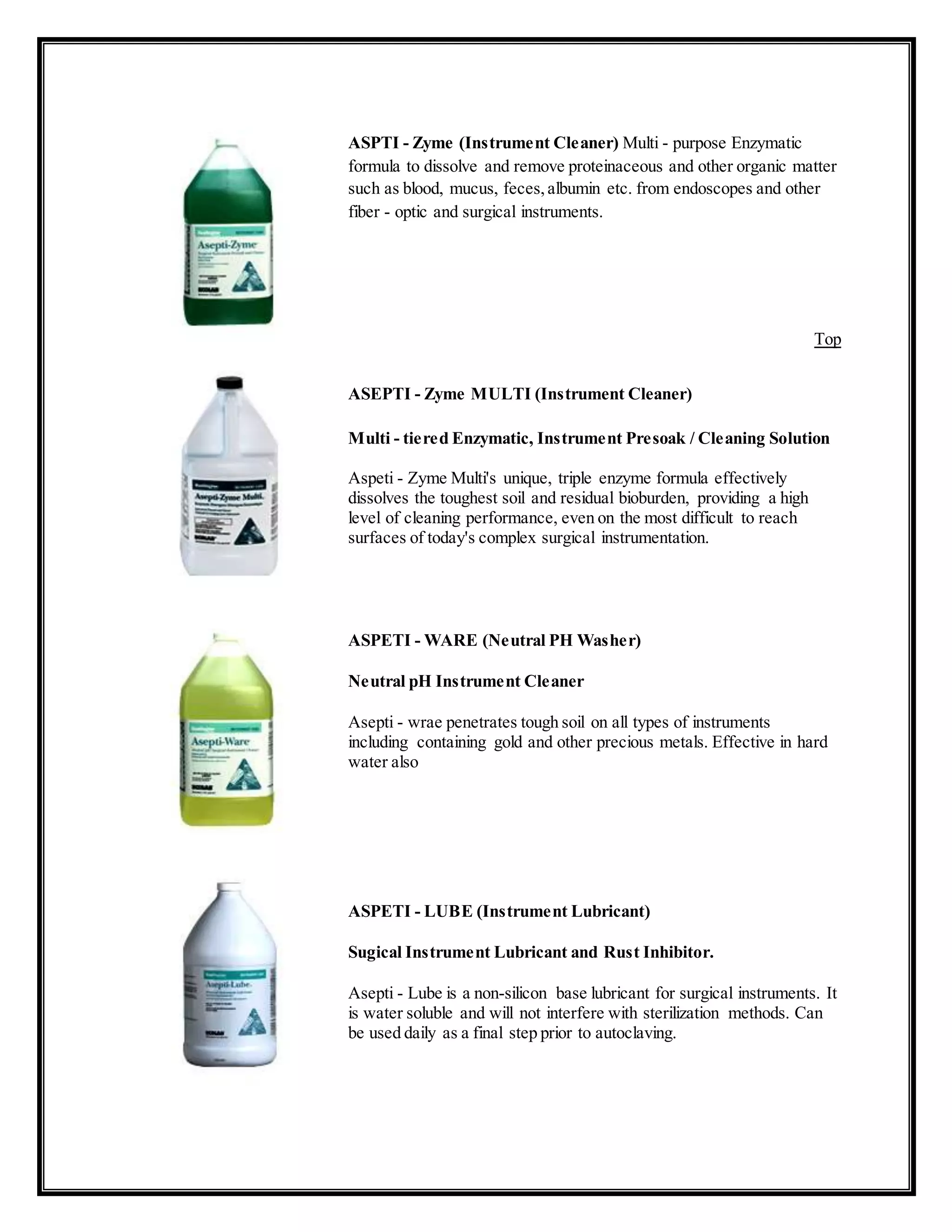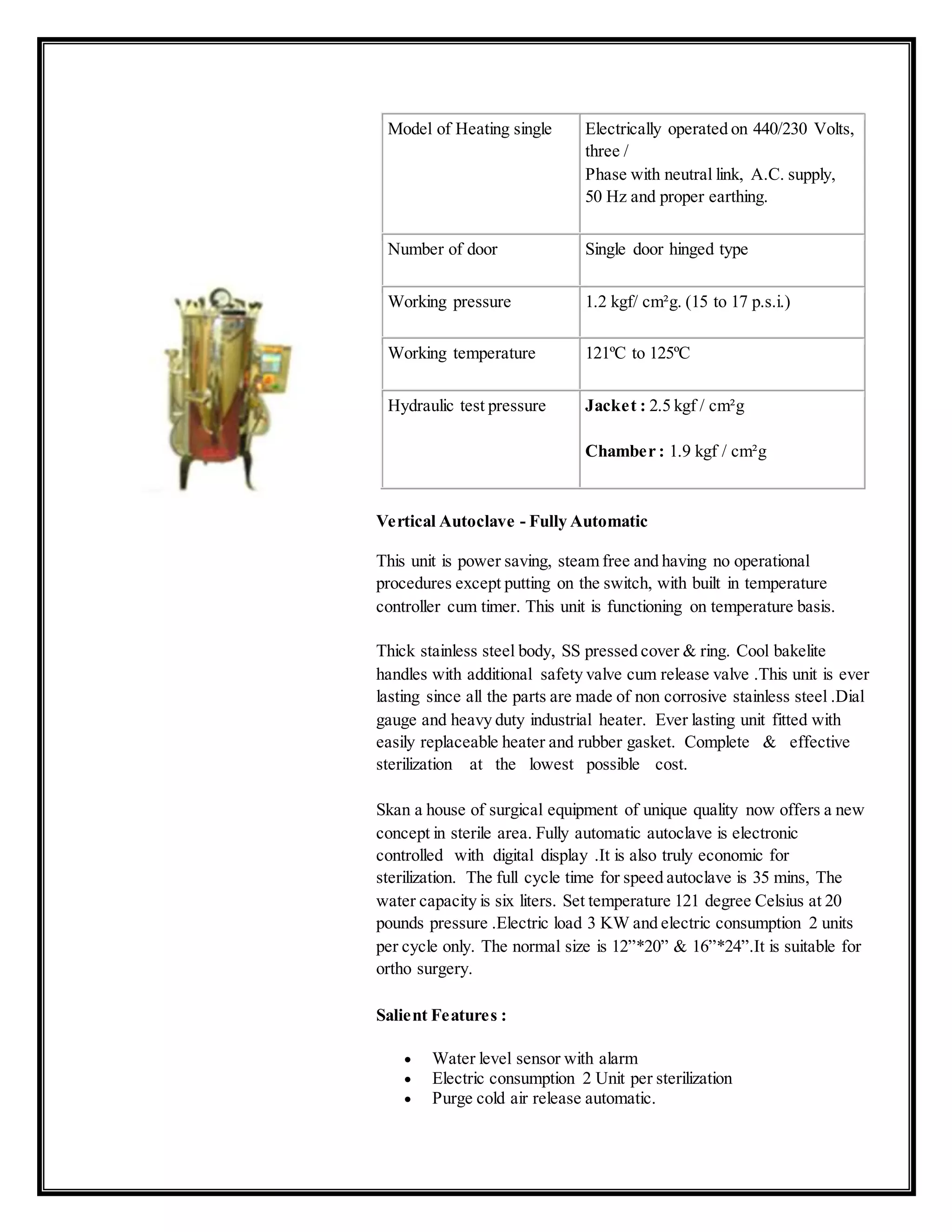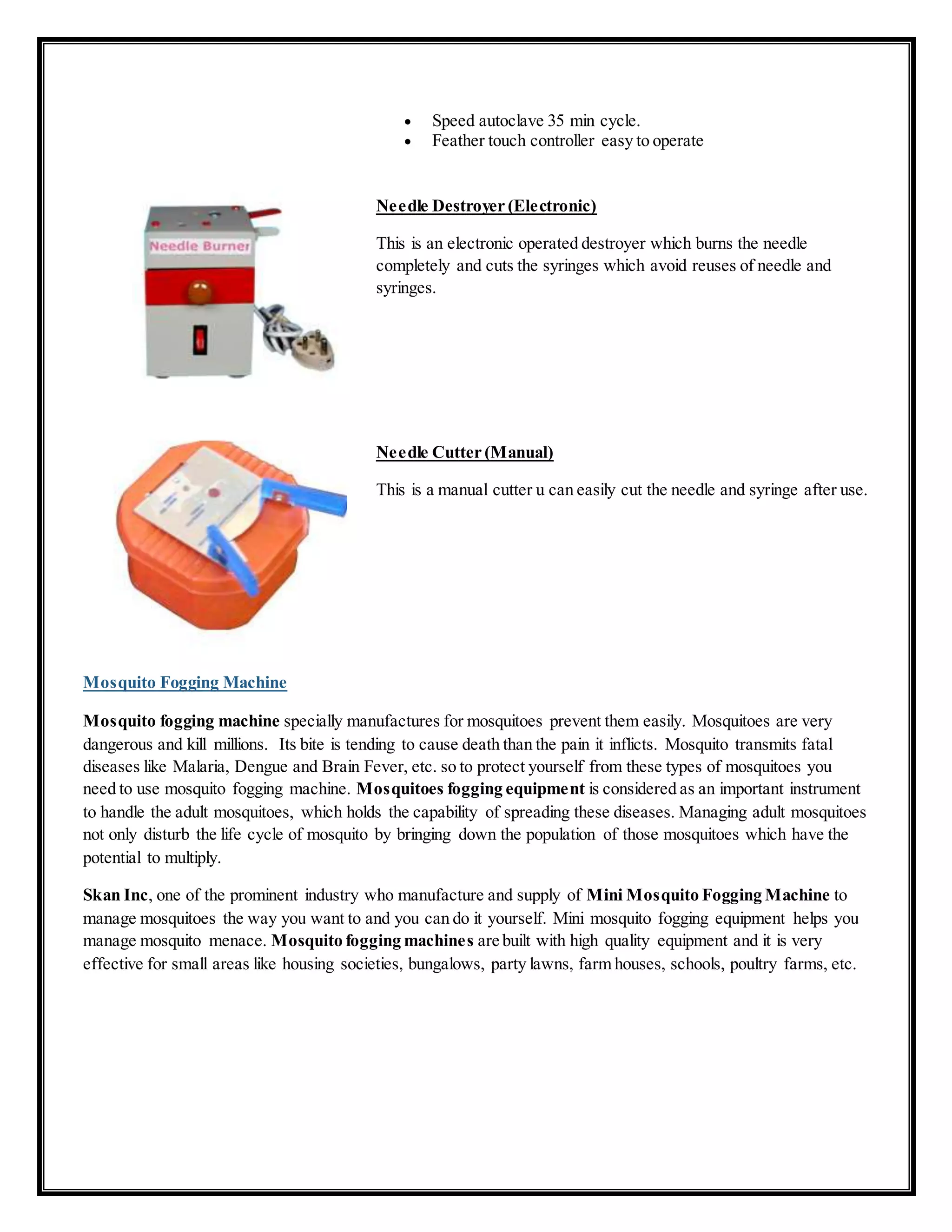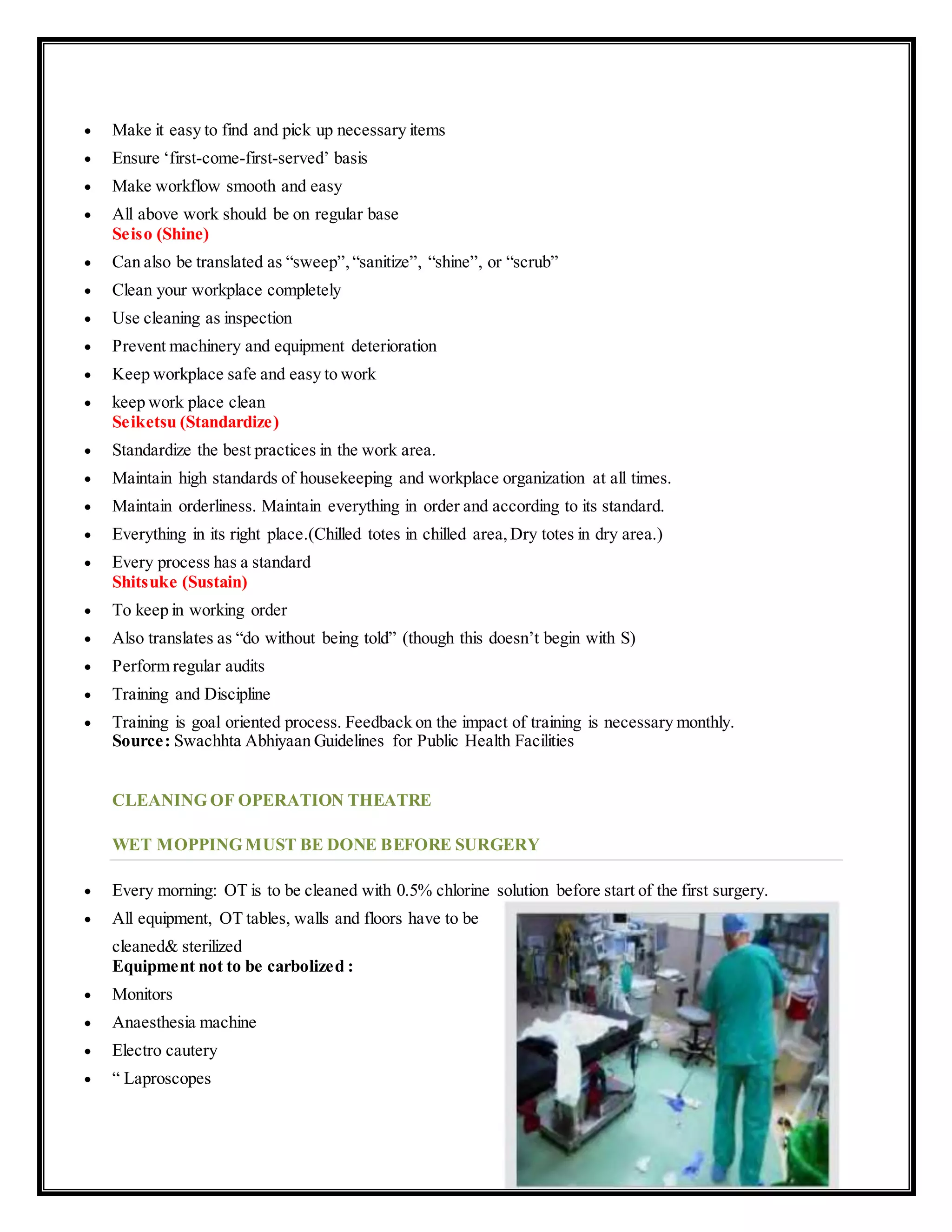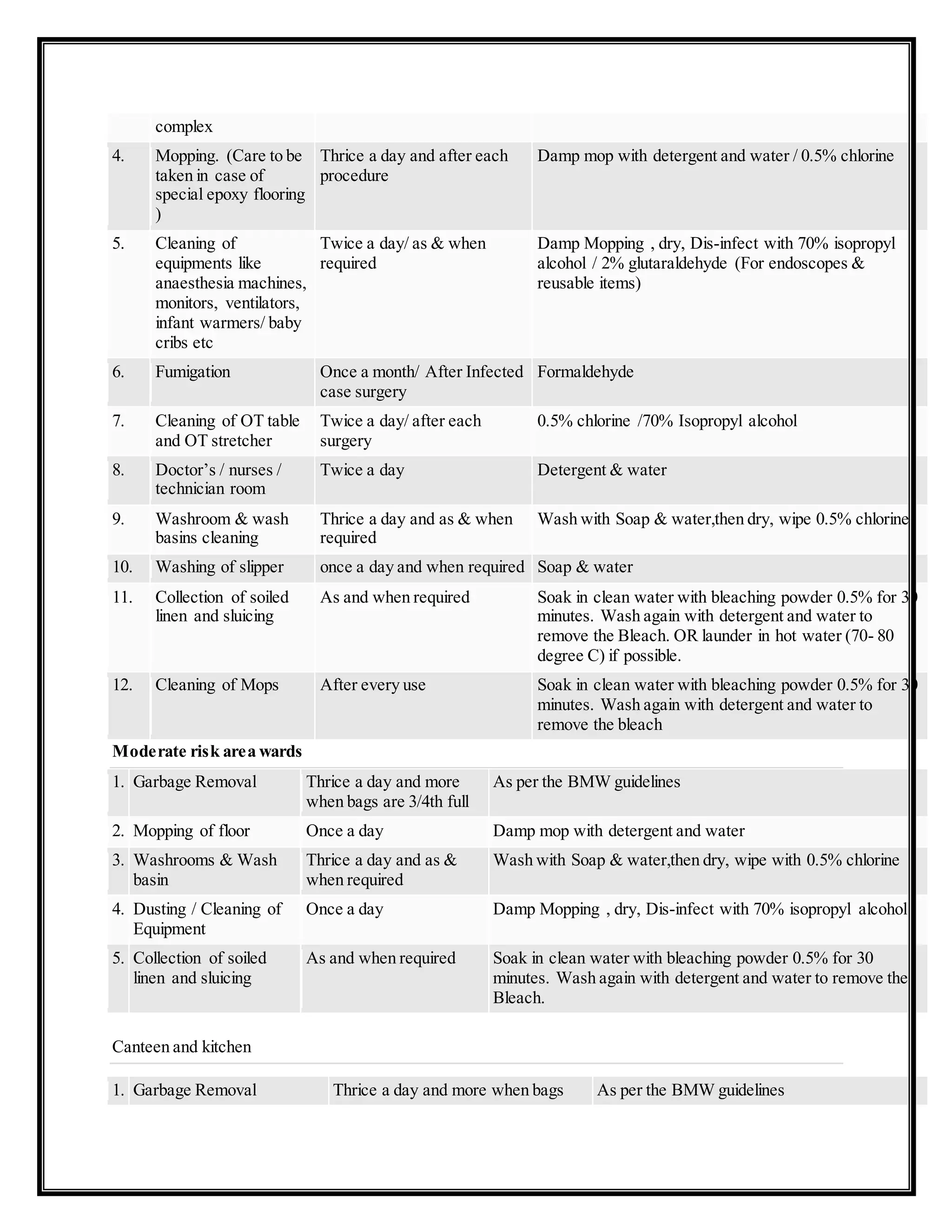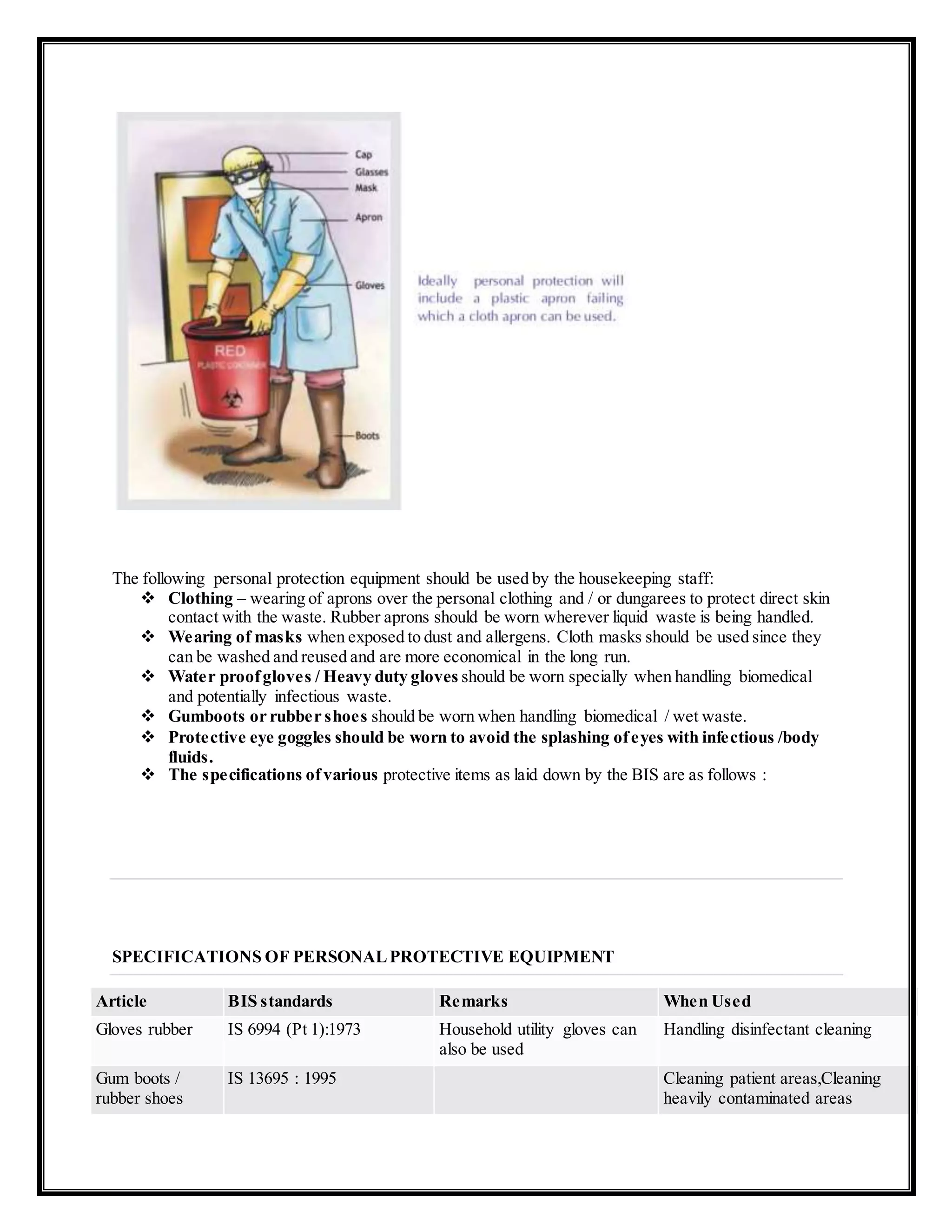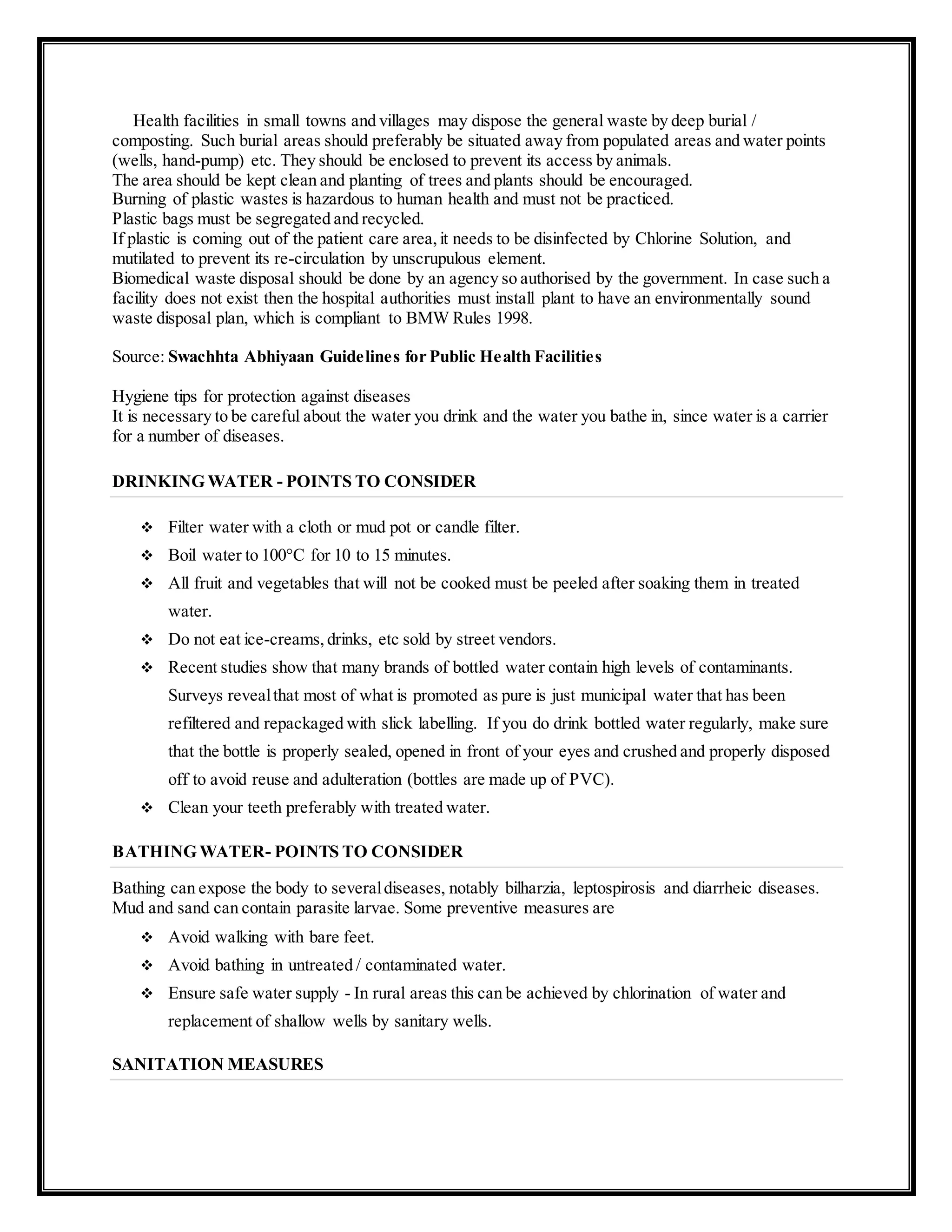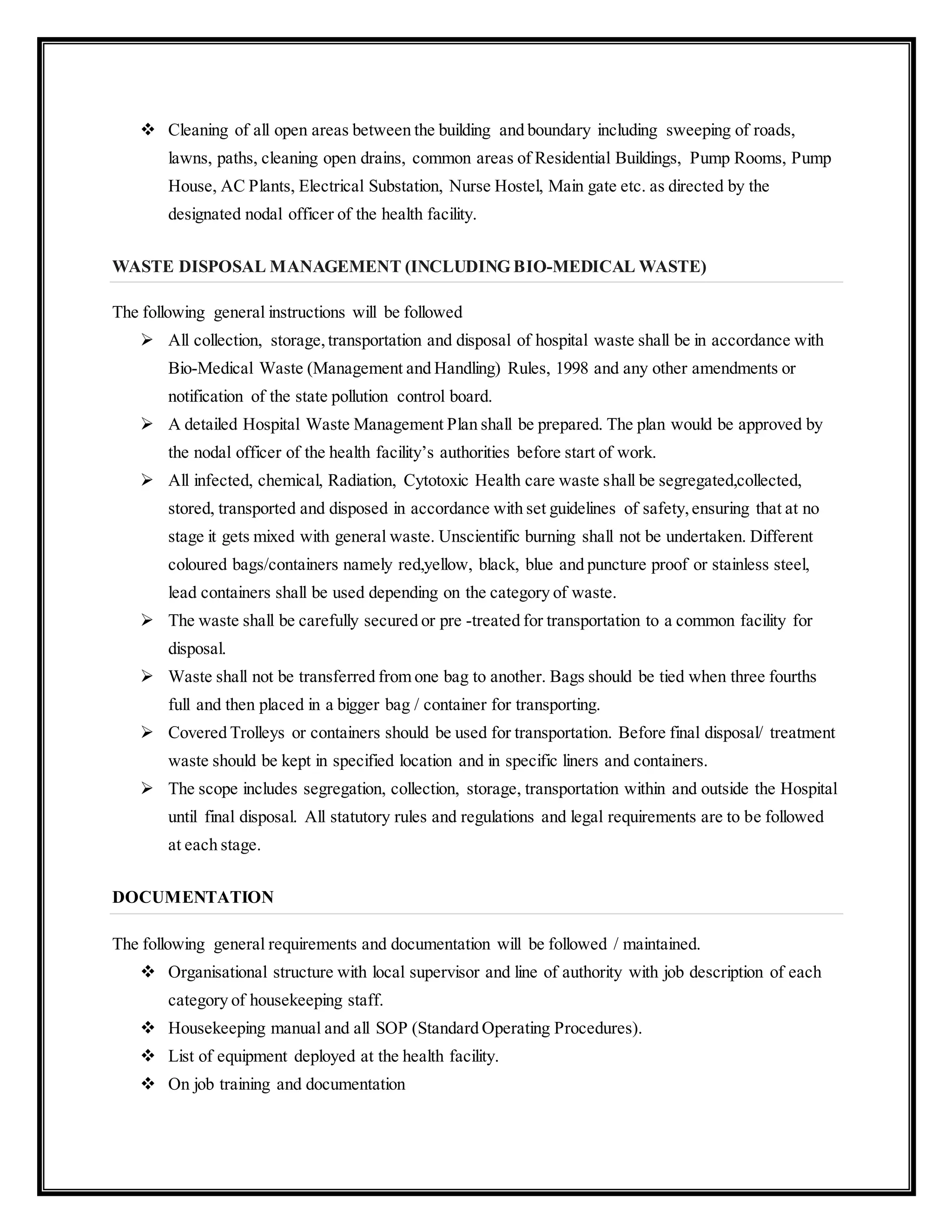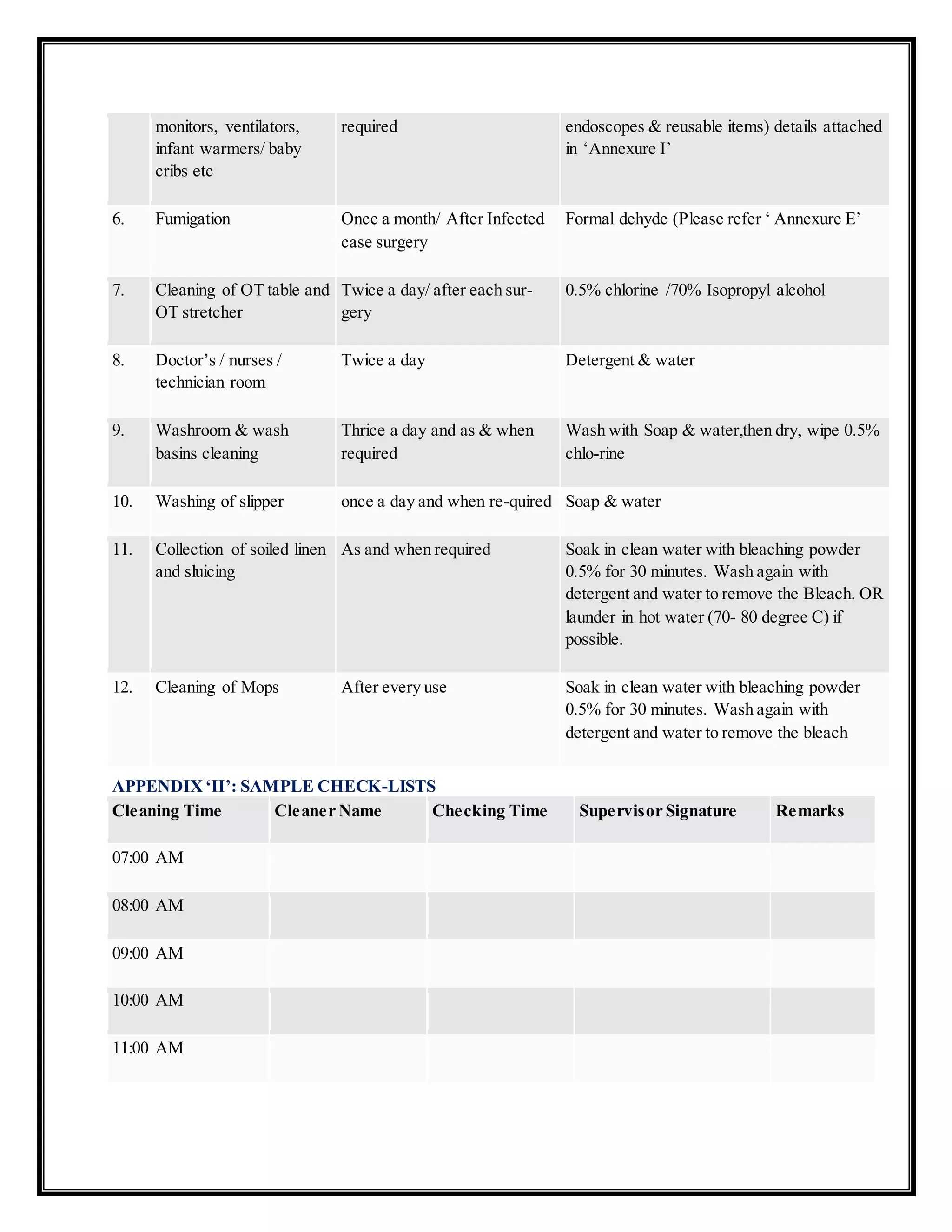The document outlines protocols for infection control related to needle sticks and blood/body fluid exposures, detailing immediate wound care, hospital reporting procedures, and the importance of follow-up serology testing. It also describes fumigation processes within hospital settings, emphasizing the importance of sterilization methods to ensure cleanliness and safety in medical environments. Additionally, it provides information on various disinfectants and cleaning agents used in hospital facilities for effective sanitation and sterilization of medical instruments.
![INFECTION CONTROL PROTOCOLS
Needle Sticks and Other Blood/Body Fluid Exposures
Learn and always observe Standard Precautions (Universal Precautions).
If you have an exposure to blood or other body fluids (e.g., needle stick, cut), immediately clean the wound
with soap and water.
Exposed oral and nasal mucosa should be decontaminated by vigorously flushing with water. Exposed eyes
should be irrigated with clean water or sterile saline. Eyewash facilities can be accessed quickly in the
emergency department for each hospital.
Follow the protocol of the hospitalin which the incident occurred to the fullest including all follow-up
(through the hospital’s Employee Health Service). It is especially important that you report your exposure
to the hospital’s Employee Health Service as soon as possible so that a timely evaluation can be performed.
Additionally, your exposure may guide future preventive efforts (e.g., education, training, selection of
devices). If prophylactic medications are indicated, it is recommended they be initiated as soon as possible
after the exposure, ideally within two hours.
If you are uncertain of the procedures for reporting and obtaining care at the facility where yourexposure
occurred, call the WoodruffHealth Sciences (WHSC) Needle stick Hotline for assistance at 404-727-4736.
Acute serology should be drawn to establish one’s baseline antibody titers to hepatitis B virus (if you have
not previously been determined to be HBsAb positive [immune to Hepatitis B]) and, if indicated, to HIV
and/orHepatitis C Virus [HCV] (if the source patient is HIV-positive or HCV-positive).
Depending on the results of one’s serology and the baseline serology of the patient (from which the
incident occurred), you may need follow-up serologies as per the hospital protocolwhere the injury
occurred.
If the source patient is HIV-infected, the administration of post-exposure prophylaxis (PEP or
“prophylactic” antiretroviral medications) to decrease the risk of patient-to-healthcare worker transmission
should be strongly considered.Medications may be initiated pending results of HIV serology on the source
patient. If used,these medications should be taken as soon as possible after the needle stick injury. Each
hospital has a protocol and will counsel you and give advice as needed. PEP regimens are complicated;
therefore, be sure that the individual who manages your exposure consults with the Hospital Epidemiologist
(see list below).
FUMIGATION PROCESS AT HOSPITAL
DEFINITION : FUMIGATION
Fumigation is a process of gaseous sterilization which is used for killing of micro-organisms and
prevention of microbial growth in air, surface of wall or floor.
It is generally used in the pharmaceuticals, operation theatres, hospitals,hotels and offices and wherever
required.
FUMIGATION OF THE OPERATION THEATRE SHALL BE DONE IN THE FOLLOWING
CIRCUMSTANCES:](https://image.slidesharecdn.com/fumigationprocessandhospitalinfectioncontrol-190708110844/75/Fumigation-process-and-hospital-infection-control-1-2048.jpg)

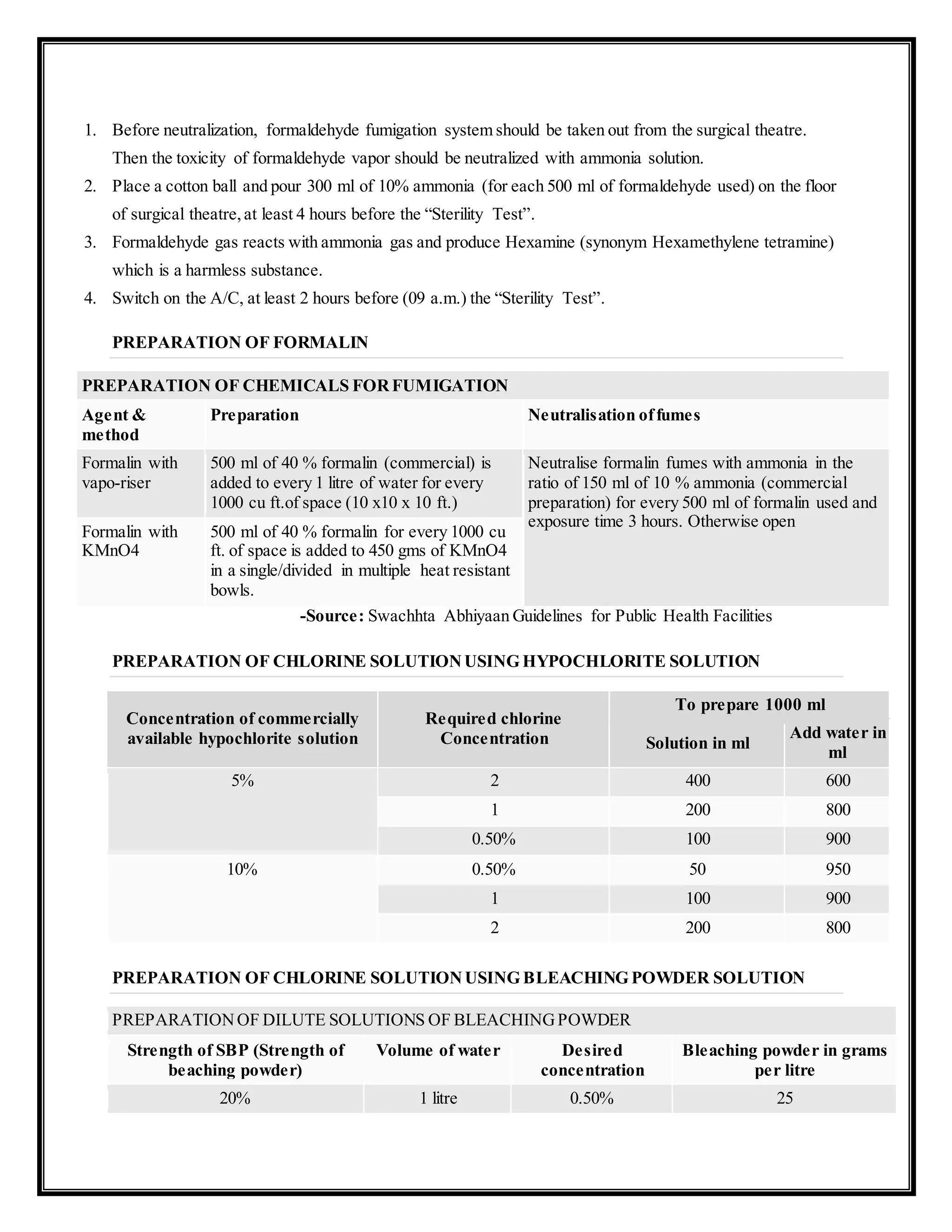


![Sekusept Plus (Instrument Dis)
Sekusept Plus is an instrument disinfectant for contaminated surgical
instruments and equipments with corrosion inhibitor. It is used for all
Thermo stable, Thermo sensitive, rigid as well as flexible endoscopes
and probes. It is economical due to very low concentration i.e. 2% &
4% dilution, short reaction time of 15 minutes and an hour for cold
sterilization including spores. Olympus and Karl Storrs are approving
it.
(ACTIVE INGREDIENTS : Glucoprotamine)
Sekusept Pulver Classic (OT Fumigation)
The Ultimate Solution for Environment Disinfection
Active ingredients: in 100g
20g Sodium Perbonate,15g Tetra AcetylEthylene Diamine [TAED]
QAC,Phenols and Aldehyde free,no eye,skin or respiratory irritation.
Rapid action at low concentration – highly economical.
Self cleaning without much scrubbing.
Range ofApplication
For Ariel disinfection and all kind of floors and surfaces in OT,
ICU, ICCU,AKD etc
Suitable for Medical bath tubs, Drying chambers, bed frames,
trolleys, work benches etc.
All types of laboratory equipments and jars.
Top
Sekumetic Fre(Instrument Cleaner)
It is enzyme base pre cleaner. It is very much compatible with all type
materials. It has to dilute with water (Dilution is 1%) and much
effective in lukewarm water.
Top](https://image.slidesharecdn.com/fumigationprocessandhospitalinfectioncontrol-190708110844/75/Fumigation-process-and-hospital-infection-control-6-2048.jpg)
